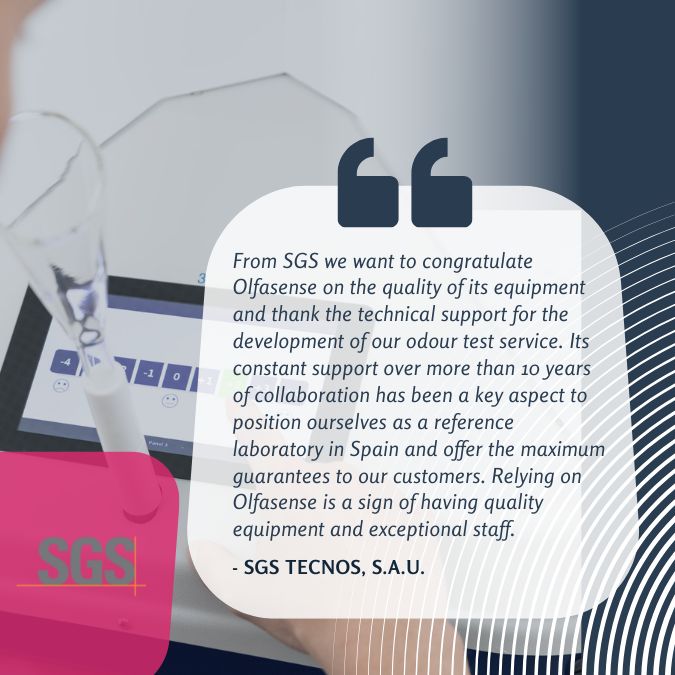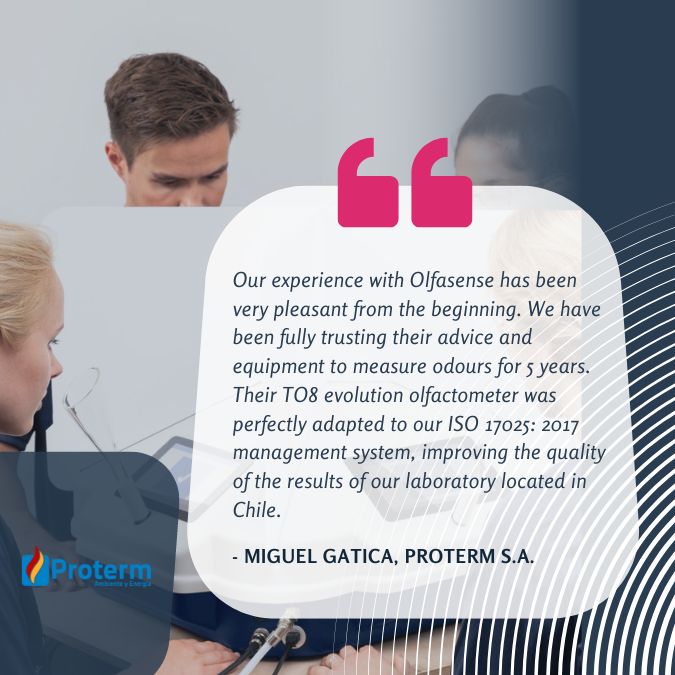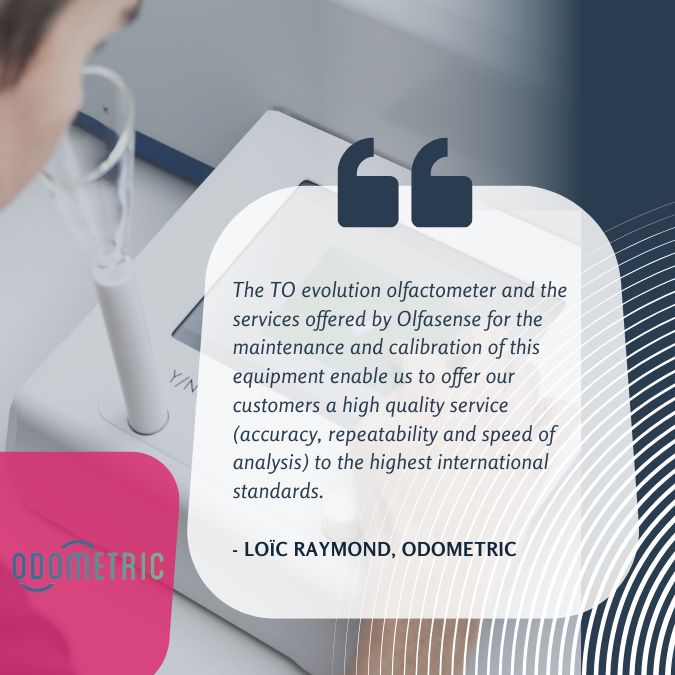Olfactometry
Olfactometry is a sensory odour measurement method which allows you to measure and assess different odour samples. With direct olfactometry using our laboratory olfactometer, we provide accurate results in order to find a solution that fits with each of your individual odour problems or other odour-related-questions.
The results of this odour measurement method can be used on various occasions:
- Is your goal to evaluate the odour emissions of your plant?
- Do you need to evaluate a cost-effective filter technology to manage odour nuisance?
- Do you want to prove that your product is reducing odours efficiently?
- Or do you simply want to assess the anti-odour properties of your materials?
No matter which one it is – Olfasense olfactometry services are your tool! Olfasense regularly uses dynamic olfactometry in accordance with the European standard EN13725 to address these questions. The EN13725 standard is primarily used for odour measurements in the environmental sector to determine odours from an odour source, e.g., an industrial plant. But it is also applied in the field of product and material testing.
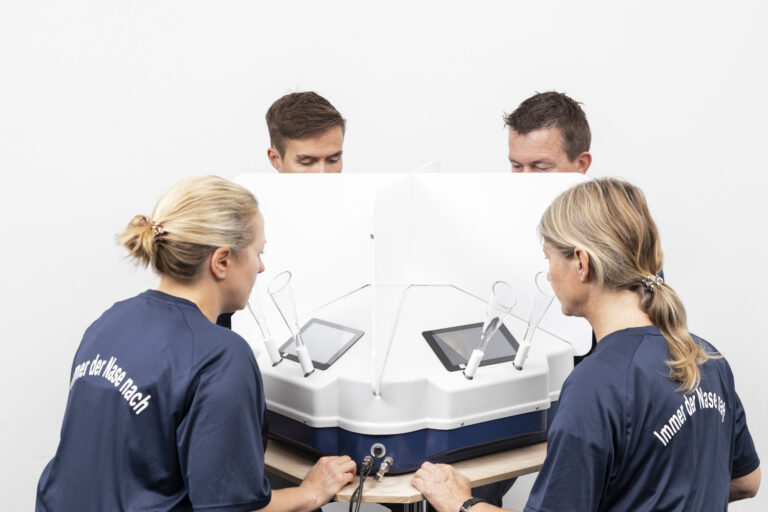
Why olfactometry is necessary for you
Olfasense operates globally and has completed more than 6500 projects worldwide, measuring and determining odours and providing companies with crucial information concerning their specific projects.
Olfactometry allows you to assess specific odours and their sources. The results of our analysis using dynamic olfactometry help you to reduce odour emission and odour nuisance. We also offer additional services, for instance, to equip you with the necessary information regarding chemical compounds and their odour character using gas chromatography-olfactometry.
To summarize, olfactometry results can be useful to…
… analyse odour concentration
… reduce odour emissions
… improve air quality
… determine the efficiency of your filter technology
As independent odour specialists, we have expert knowledge in all available odour treatment technologies such as
- filtration (e.g. biofilter, biotrickling filter, …)
- thermal post-combustion
- activated carbon adsorption
- chemical scrubbing
- incineration
- as well as hybrid technologies
Olfasense high quality standards
Our quality standards are important to us. Olfasense works according to the European standard EN13725, among others. The European Standard EN13725 defines a certain method for the determination of odours.
The EN13725 was born in the early 2000s, with the aim to provide a common basis for evaluation of odour emissions in the member states of the European Union. The EN13725 standard specifies a method for determining odour concentration applying dynamic olfactometry with the human nose as a measurement device. Over the years, several countries in the world have developed standards concerning the evaluation of odours, taking the EN13725 as a reference. In 2022, the revised European standard for olfactometry EN 13725:2022 came in place. Today, (almost) all member states of the European Union have implemented the new EN13725.
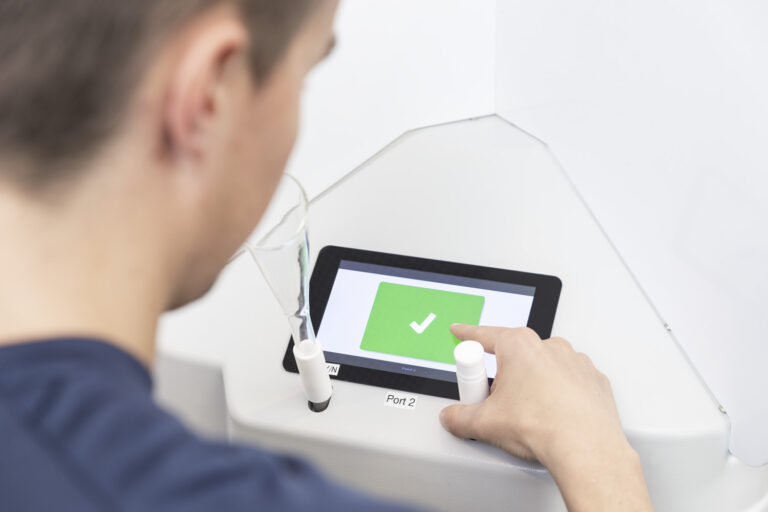
Some measurement methods, as for instance, field olfactometers do not meet the technical requirements of the EN13725 standard. In fact, the revised standard explicitly excluded field olfactometry from the scope. Moreover, various studies show that field olfactometers lack precision regarding their results. To ensure high quality standards for our customers, Olfasense does not manufacture nor work with field olfactometers, but rather uses dynamic olfactometry in accordance with the European standard EN13725.
⇨ Get in touch with our olfactometry experts
Olfasense olfactometry measurement method
Olfactometry is a sensory measurement method which uses the human nose as a measurement device. Olfactometry must be performed in an odour free environment.
We are working with odour panels consisting of multiple odour panellists to evaluate and assess each odour sample. Typically, single odour samples are contained in a sample bag, which is connected to an olfactometer, which dilutes the sample with odour free air.
The EN13725 standard is used regularly for odour measurements in the environmental sector to determine odours from an odour source, e.g., an industrial plant. For instance, odour samples to assess an industrial plant can be taken from exhaust chimneys.
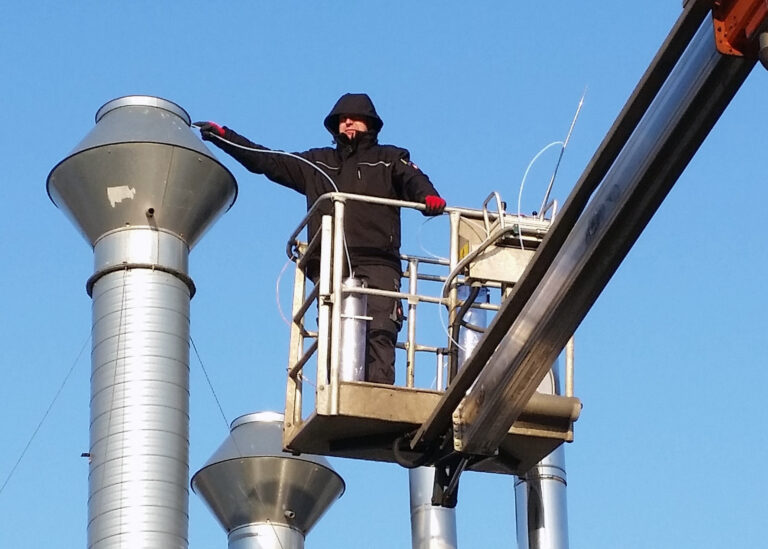
Multiple test rounds:
In each test round, the olfactometer dilutes the odour sample with neutral-smelling compressed air. In the first test round, the odour panellists will not perceive any odour. During the following test rounds, the olfactometer continues to dilute the odour sample down to the point where 50% of the odour panellists finally perceive the odour, and the odour threshold is reached.
Determining the result:
After reaching the odour threshold, the dilution ratio between neutral and sample air becomes apparent. This allows us to determine the odour concentration in units of OUE / m³ air.
You might be curious to know that besides olfactometry, we also offer GC sniffing/ gas chromatography-olfactometry (GCO). The main difference is the way these two processes are performed. While olfactometry takes place with an olfactometer, gas chromatography-olfactometry works with a gas chromatograph coupled to an olfactory detection port. GC sniffing is used for the characterisation and identification of odours, especially in complex mixtures of odour-relevant compounds, by combining the two approaches of sensory and molecular odour analysis. In this process, the chemical information of GC-MS is combined with the sensory assessment of the odour sample, using the human nose of a panelist. The results of GC sniffing provide information concerning distinct substances of odour samples.
Click the following link to get more information on our services regarding gas chromatography olfactometry.
⇨ Get in touch with our olfactometry experts
Our technology for your benefit
As a leading specialist odour consultancy and the world’s leading supplier of odour measurement equipment, Olfasense can provide you with the fitting technology for each of your odour concerns. Plus, with Olfasense, you benefit from over 30 years of experience.
We are constantly working on improving our instruments according to the existing olfactometry standards even further. The TO8 and TO9 evolution olfactometer are the latest members of our next generation olfactometer family. Both olfactometers meet all requirements of the new EN13725 standard and can be used both as a home-based laboratory and as a mobile on-site laboratory. Additionally, both olfactometers are available as a 4-station as well as a 6-station olfactometer. This way, you can decide which number of panelist stations is most suitable for you. Last but not least, our olfactometers come with a dedicated Laboratory Information Management System (LIMS) for olfactometry laboratories which supports you in the process of delivering EN13725 olfactometry measurements of the highest quality.
Yet, with the maximum dilution of 217 the TO9 evolution olfactometer makes it possible to measure higher odour concentration samples than with the TO8 evolution olfactometer. Supported methods are, for instance, Dual Forced Choice and Hedonic Tone. Click the following link for more information regarding the TO9 evolution olfactometer and its benefits.

